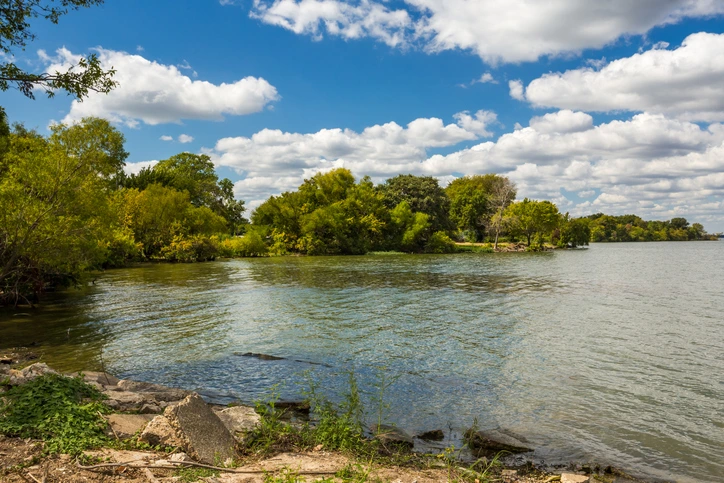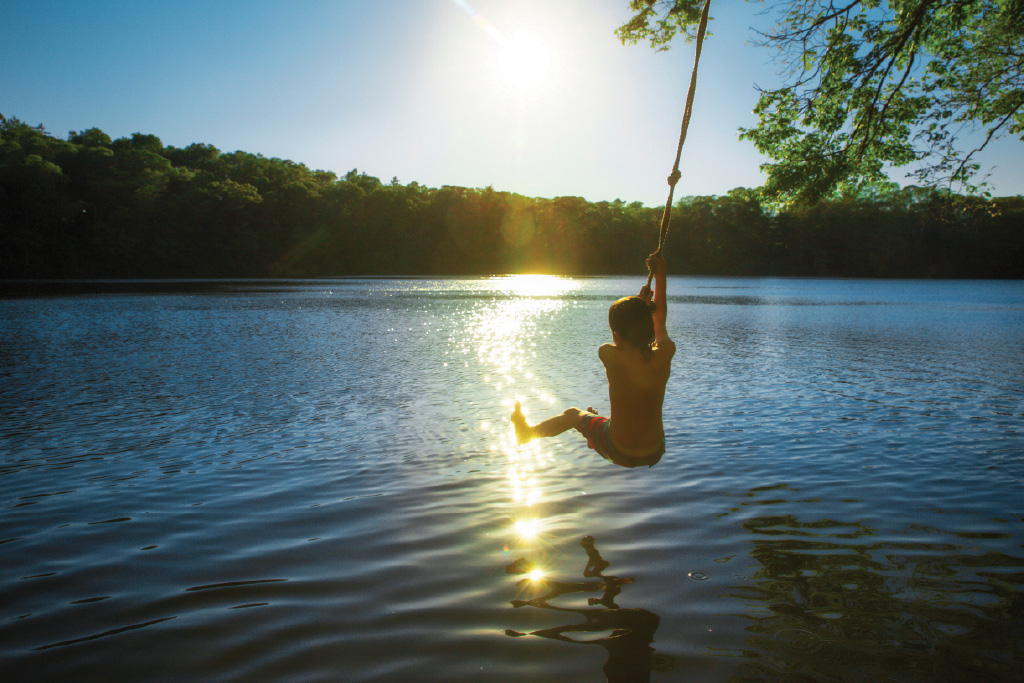As the summer heat rolls in, the allure of Austin’s picturesque lakes becomes irresistible for those seeking relief from scorching Texas temperatures. However, beneath the surface lies a lingering worry: are Texas lakes safe to swim in?
With concerns about potential swimming safety hazards, it’s crucial to delve deeper into this question to ensure a worry-free summertime experience. In this article, we’ll explore factors influencing the safety of swimming in Texas lakes, and provide valuable insights to help you make informed decisions about when, where, and how to swim in open bodies of water this summer.

Potential Swimming Hazards
Several factors go into answering the question “Are Texas lakes safe to swim in?” It’s important to be aware of potential hazards that can impact the safety of any body of open water. Examples of some of these factors can be found below:
Water Quality
Lakes can be affected by pollution from various sources such as agricultural runoff, urban development, and recreational activities. High levels of bacteria, harmful algae blooms, and pollutants in the water can pose health risks to swimmers.
Underwater Hazards
Unlike controlled swimming pools, lakes often harbor hidden hazards beneath the surface. Submerged rocks, fallen trees, sharp branches, glass products, and other trash, or uneven terrain can cause injuries if swimmers are not cautious or are unaware of their presence.
Strong Currents
Some lakes, especially those fed by rivers or with active inflows and outflows, can have strong currents that are not always apparent at the surface. These currents can be powerful and potentially dangerous, especially for inexperienced swimmers.
Wildlife Encounters
Lakes are natural habitats for a variety of wildlife, including fish, turtles, snakes, and even alligators in certain areas. While most wildlife poses little-to-no threat to swimmers, it’s important to be cautious and informed about the potential presence of any dangerous species.
Weather Conditions
Sudden weather changes can significantly impact lake conditions. Strong winds, thunderstorms, or flash floods can create hazardous situations, Swimmers may encounter rough waves or rapid changes in water depth.

Are Texas Lakes Safe to Swim In?
The great news is, swimming in Texas lakes is just as safe as swimming in any natural body of water, taking into account the possible risks outlined above.
To attempt to mitigate these hazards when swimming in a natural body of water, it is important to follow the safety tips outlined below, and to follow any safety advisories in the area, to ensure that everyone can stay safe while having fun.
Know Your Swimming Abilities
Be honest with yourself and your fellow swimmers about your swimming skills and limitations. If you’re not a confident swimmer, stay in shallow areas or wear a properly fitted life jacket while inside the water.
Swim in Designated Areas
Always look for designated swimming areas with lifeguards, if available. These areas are often monitored, marked for depth, free from underwater hazards, and are less likely to host dangerous wildlife.
Check Water Quality
Before entering the lake, check for any advisories or warnings regarding water quality. Avoid swimming if the water has been deemed unsafe due to high bacteria levels, harmful algal blooms, or pollution.
Stay Aware of Underwater Hazards
Look before you leap! As much as possible, look below the surface of the water and take note of any potential underwater hazards. Enter the water cautiously and avoid diving headfirst into unknown areas to help prevent injuries.
Watch for Signs of Wildlife
Keep an eye out for signs of wildlife activity or potentially dangerous species. Avoid swimming near areas with nesting sites, known alligator habitats, or where snakes or other potentially harmful creatures are frequently spotted. Online research can help you identify open bodies of water with high levels of wildlife activity.
Swim with a Buddy
It’s always safer to swim with a buddy or in the presence of others. This way, you can look out for each other and respond quickly in case of an emergency. Make sure that young children are never allowed to swim unsupervised.
Be Cautious of Currents
If there are noticeable currents or inflows/outflows in the lake, avoid swimming in those areas, especially if you’re not a strong swimmer. Even seemingly calm waters can have hidden currents that may pose a risk.
Stay Hydrated and Protected
Remember to stay hydrated by drinking plenty of water, especially during hot summer days. Avoid alcohol, as swimming in an impaired state can increase the risk of injury or drowning. Apply and reapply sunscreen to protect your skin from harmful UV rays, even if the water feels cool.
Be Aware of Weather Conditions
Keep an eye on weather forecasts before your upcoming lake day and be cautious of sudden or unexpected changes. If thunderstorms or other severe weather conditions occur while you’re in the water, exit the water and seek shelter.
By following these water safety tips, you can enhance your lake swimming experience while minimizing the risks associated with swimming in open water. Remember, awareness, preparation, and caution are key to enjoying the beauty of Texas lakes safely!

Safe Swimming in Austin
To swim safely this summer in Austin, Texas, you’ll need to know where to go! Check out this awesome article from Visit Austin for more information about Austin’s safe, must-see swimming holes. Tubing at Blue Hole is a summer-must, and the Barton Springs Pool is perfect for families looking to beat the summer heat.
Get Help From Austin Emergency Center
No matter how safe you are while swimming this summer, accidents can still happen. In the event of an emergency during your lake excursion, you can rely on immediate, high-quality medical assistance from Austin Emergency Center. Our team of board-certified physicians is ready to provide prompt and elevated care in state-of-the-art facilities. Prioritize your safety, enjoy the lakes responsibly this summer, and rest assured that Austin Emergency Center is there to provide the care you may require.

